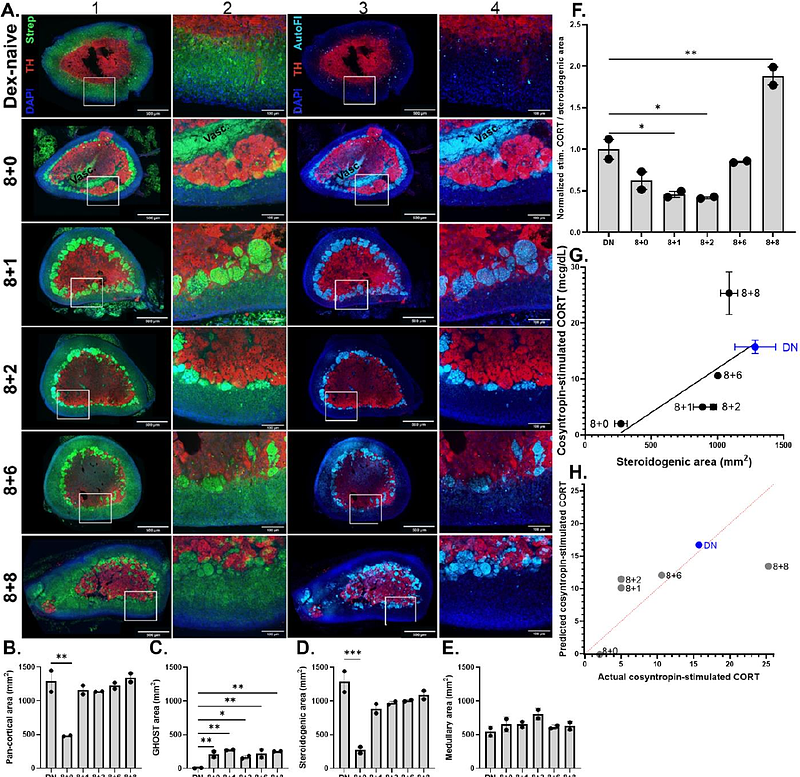Rapid hypothalamic-pituitary recovery after chronic glucocorticoid therapy enables strategies that prevent adrenal suppression

Rapid hypothalamic-pituitary recovery after chronic glucocorticoid therapy enables strategies that prevent adrenal suppression
Gaston, L. S.; Jorgensen, B. C.; Friedman, H. R.; Sherman, M. S.; Majzoub, J. A.
AbstractGlucocorticoid-induced adrenal insufficiency (GIAI) persists for months to years after long-term treatment, which past studies suggest is mediated by initial, post-withdrawal hypothalamic-pituitary suppression. We examined the timing of hypothalamic, pituitary, and adrenal (HPA) recovery after 8 weeks of dexamethasone (DEX) treatment in mice. At withdrawal, HPA function was fully suppressed, but Crh mRNA and plasma ACTH surprisingly rebounded above control levels within 1 week. Despite this, corticosterone (CORT) remained suppressed for an additional 7 weeks. DEX-exposed adrenals were atrophic and contained previously undescribed, giant, multinucleated histiocytes. CORT secretion was disproportionately low relative to the non-histocyte adrenocortical area in the first 1-2 weeks post-DEX, suggesting that post-withdrawal GIAI is mediated by adrenocortical atrophy with superimposed, reduced ACTH responsiveness. We then tested whether trophic stimulation of the adrenal during glucocorticoid exposure prevented GIAI. Daily co-treatment with DEX and cosyntropin (an ACTH analog) failed to prevent GIAI. However, mice with non-suppressible endogenous ACTH due to knockout of the hypothalamic glucocorticoid receptor maintained normal adrenal function and histology despite long-term DEX. Localizing the mechanisms of post-withdrawal GIAI to the adrenal may permit the development of preventative strategies that mimic native HPA signaling during glucocorticoid exposure, thus reducing the morbidity of a widely prescribed drug class.